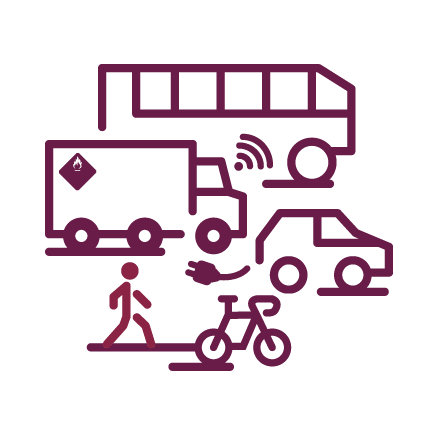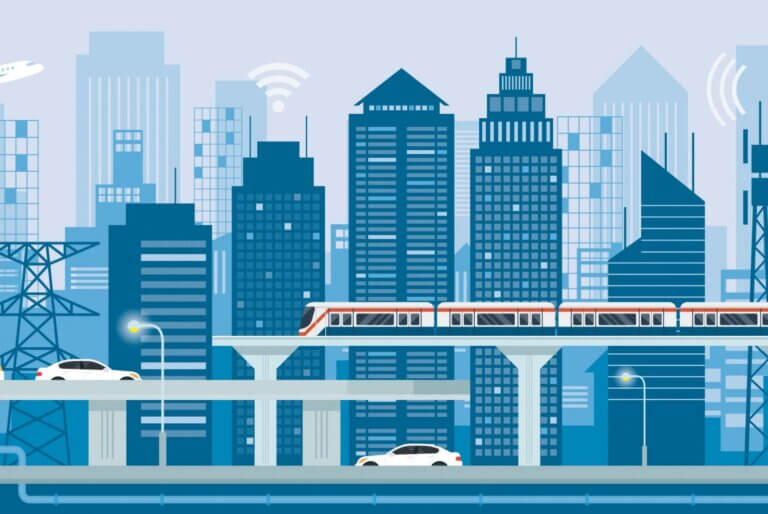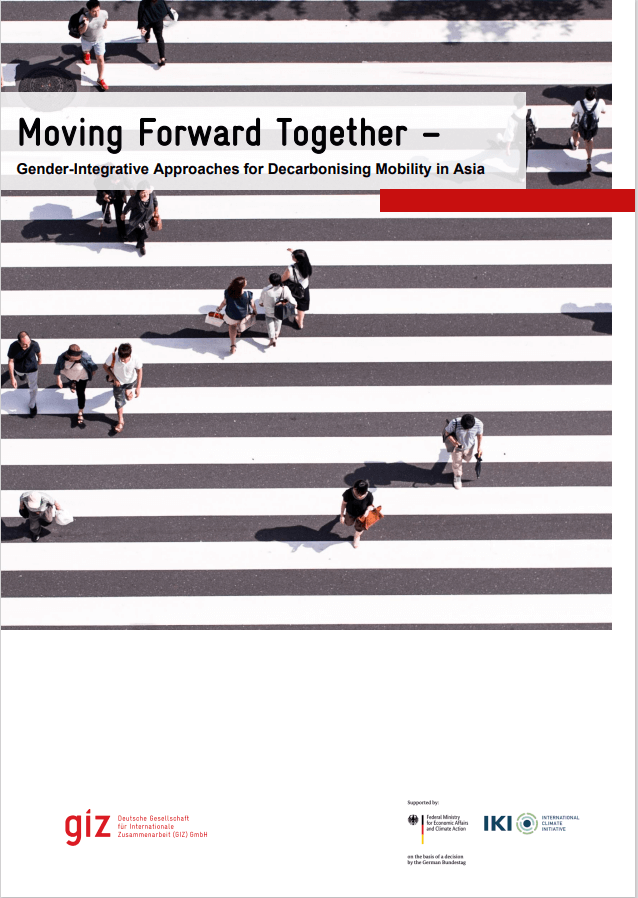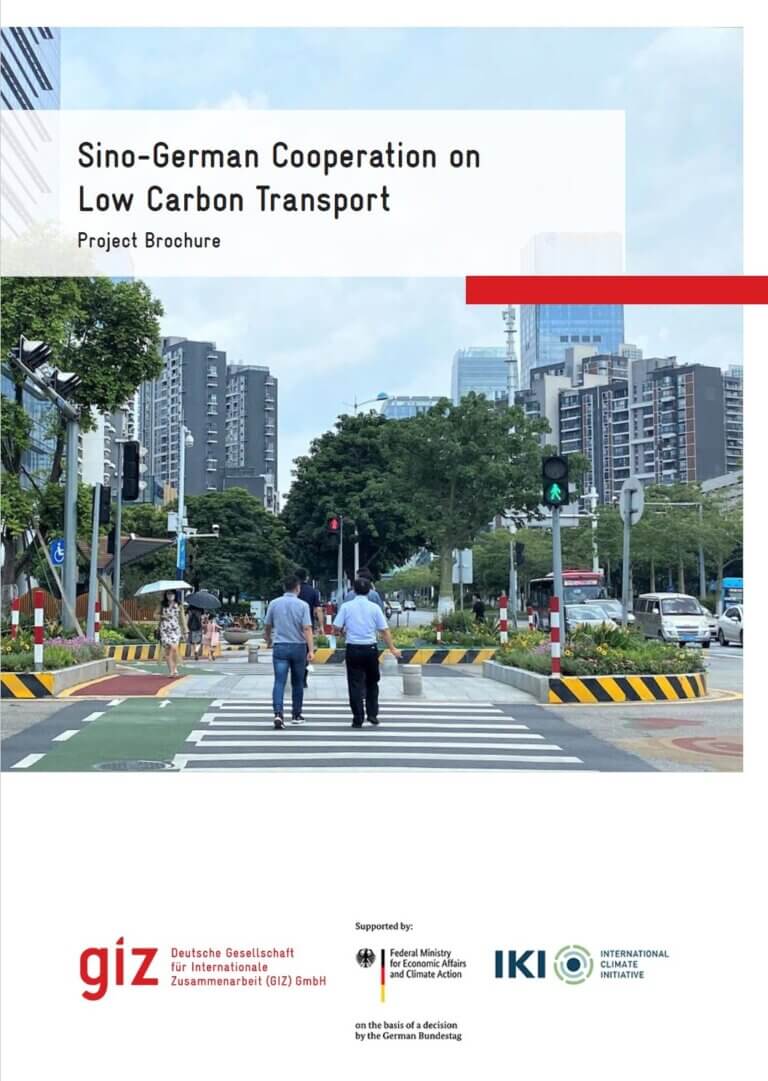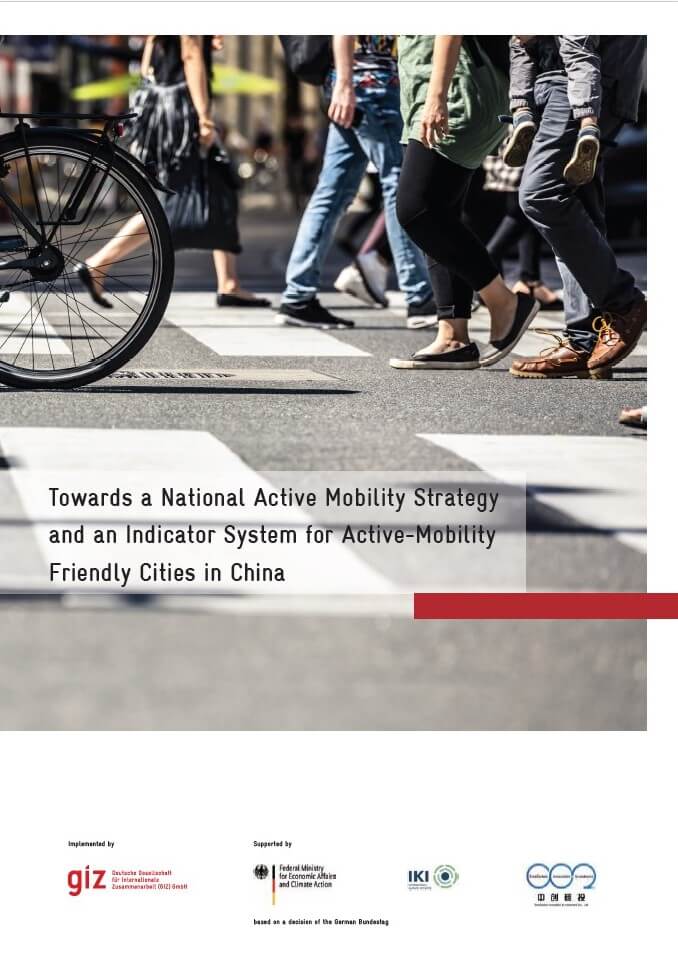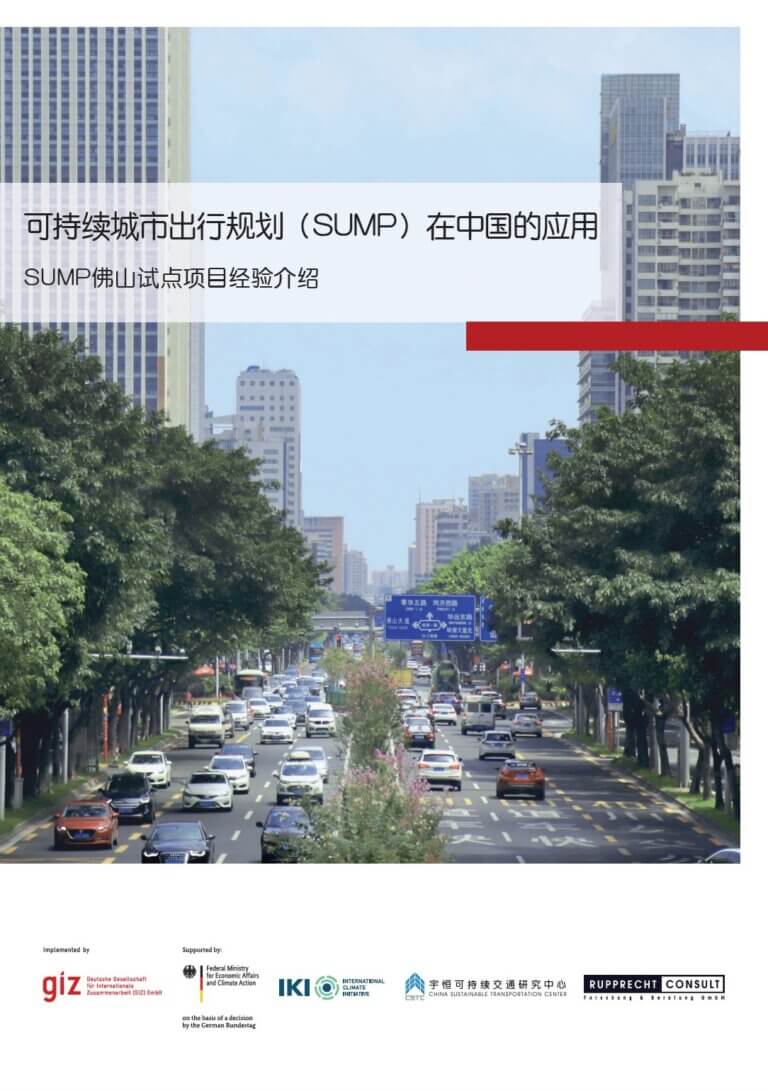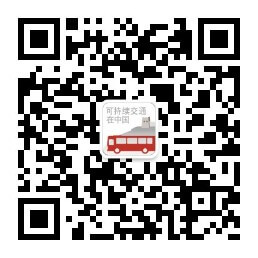Transportation experts at MIT have developed new insights into how decision makers in hundreds of Chinese cities design and adopt policies relating to transportation — policies that could together curtail the rapidly growing demand for personal vehicles in China. Based on a mathematical analysis of historical data plus text analysis of policy reports, the team concludes that Chinese cities that have experienced similar urban development and motorization trends over time prioritize the same types of transportation policies to deal with their local conditions. Such a pattern is of interest to urban decision makers seeking role models for developing transportation policies. In addition to looking to Beijing and Shanghai — the trendsetters for innovative policymaking — decision makers can now learn by working with cities that face transportation challenges more similar to their own.
The study
Chinese cities have experienced diverse urbanization and motorization trends that present distinct challenges for municipal transportation policymaking. However, there is no systematic understanding of the unique motorization and urbanization trends of Chinese cities and how physical characteristics map to their transportation policy priorities. The authors adopt a mixed-method approach to address this knowledge gap. They conduct a time-series clustering of 287 Chinese cities using eight indicators of urbanization and motorization from 2001 to 2014, identifying four distinct city clusters (see Figure 1).
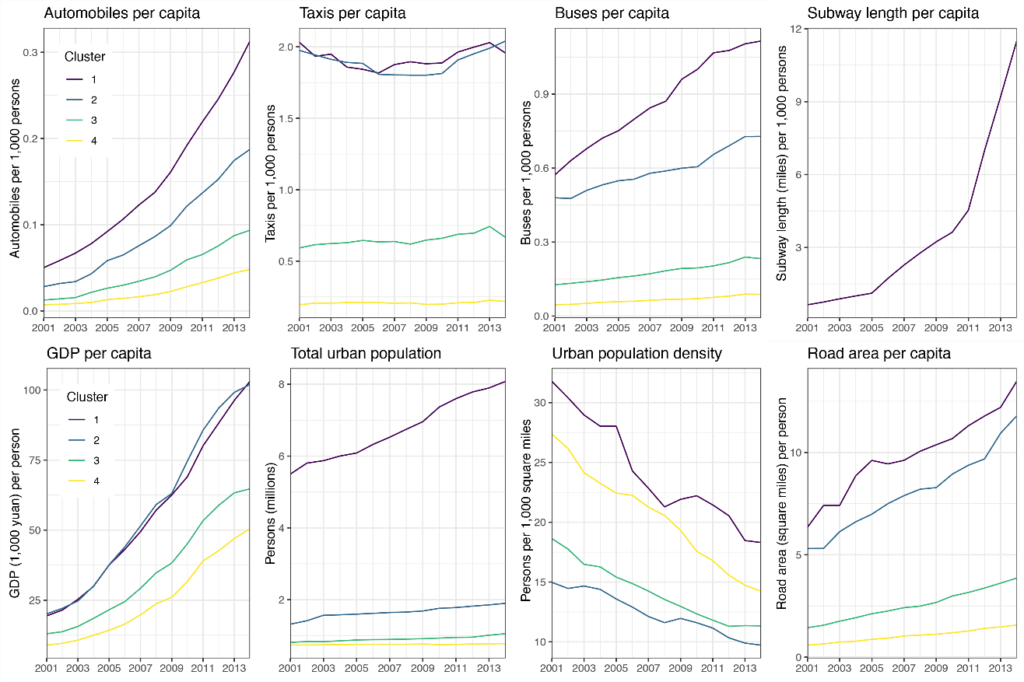
The research team compile a policy matrix of 21 policy types from 44 representative cities and conduct a qualitative comparison of transportation policies across the four city clusters. They find clear patterns among policies adopted within city clusters and differences across clusters (see Figure 2). Wealthy megacities (Cluster 1) are leveraging their existing urban rail with multimodal integration and transit-oriented development, while more car-oriented wealthy cities (Cluster 2) are building urban rail and discounting public transport. Sprawling, medium-wealth cities (Cluster 3) are opting for electric buses and the poorest, dense cities with low mobility levels (Cluster 4) have policies focused on road-building to connect urban cores to rural areas.
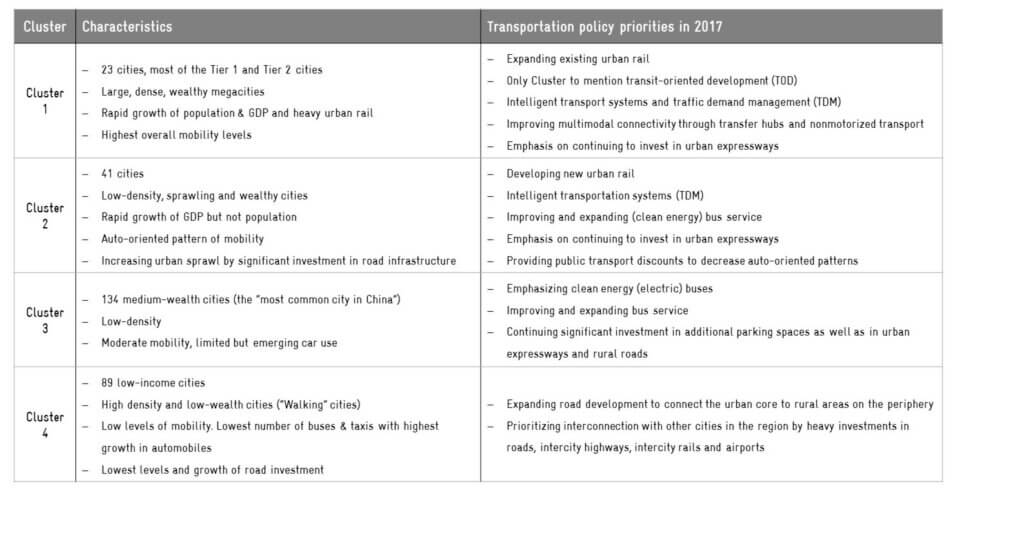
If you would like to know more about the four city clusters, their detailed transport policy priorities and which cities belong to them, you can find below the full article in English and in Chinese. Click below to download the article.
This publication is a guest contribution. The original article, by Nancy Stauffer, appears in the Spring 2020 issue of Energy Futures, the magazine of the MIT Energy Initiative (MITEI), and is reprinted here with permission from MITEI. View the original article on the MIT Energy Initiative website: http://energy.mit.edu/news/transportation-policymaking-in-chinese-cities/.
Supplementary material is retrieved from the scientific journal article „Moody Joanna, Shenhao Wang, Jungwoo Chun, Xuenan Ni, and Jinhua Zhao. (2019). Transportation policy profiles of Chinese city clusters: A mixed methods approach. Transportation Research Interdisciplinary Perspectives, 2. https://doi.org/10.1016/j.trip.2019.100053 [open access]“.
